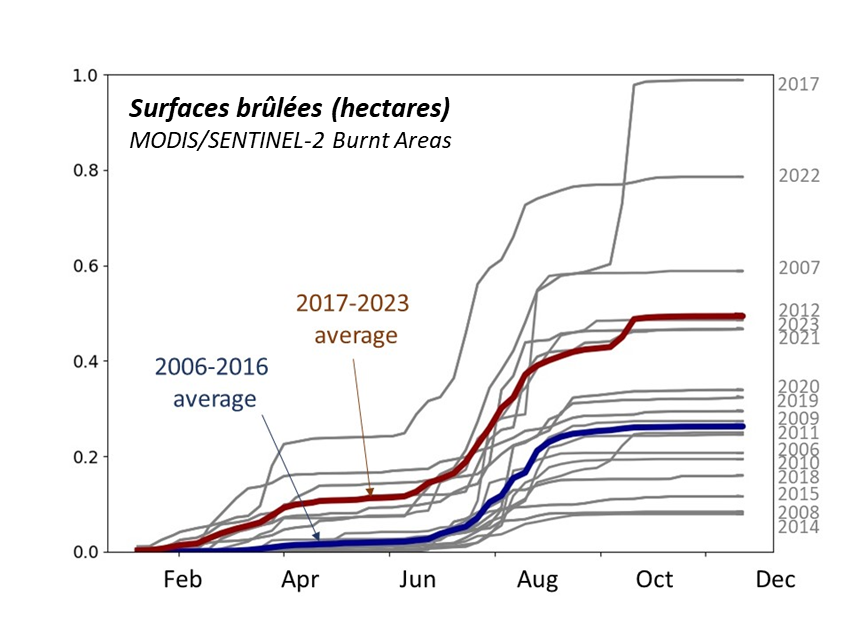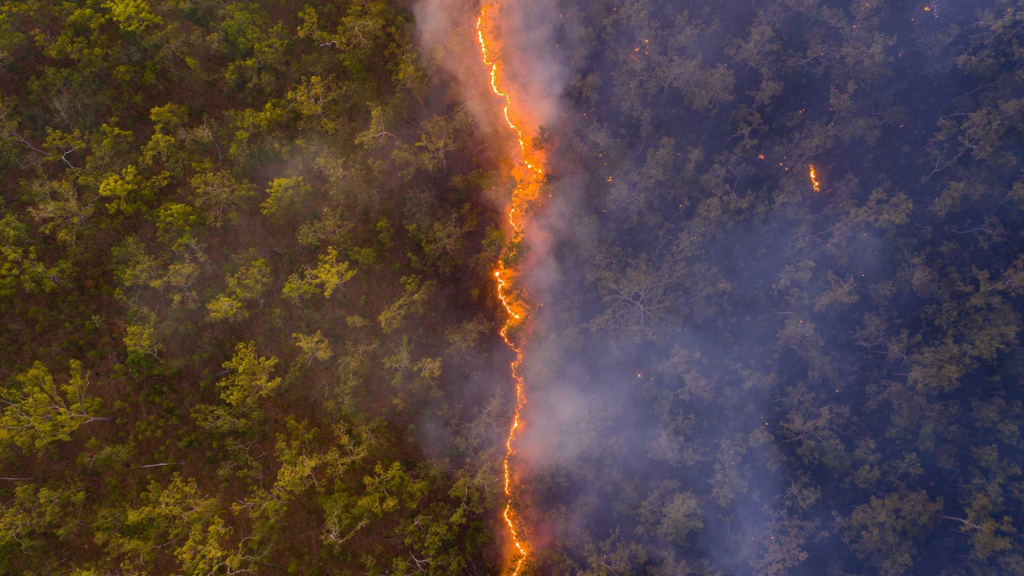Increasing Wildfire Risk

Recent extreme fire events highlight the emergence of a new wildfire regime across Europe, driven by longer fire seasons, higher temperatures, and drier conditions. Southern Europe is especially vulnerable, with projections indicating a faster rise in fire occurrence than the global average.
Protecting Lives, Nature, and Infrastructure
Timely and accurate understanding of wildfire spread is vital to
safeguarding populations, ecosystems, and infrastructure. However, knowledge gaps remain in the interactions between fuels, weather, terrain, and fire behavior. Advanced monitoring and modeling tools are urgently needed to support first responders and reduce wildfire
impacts.

Health and Environmental Exposure to Smoke

Wildfires emit large quantities of gases and aerosols, affecting air quality and public health over broad areas. Exposure to smoke poses greater health risks than direct flame contact, and the resulting pollution can have cascading effects on ecosystems, including water and soil quality. Monitoring smoke transport and its effects is essential to support evidence-based policies for health and environmental protection.
Climate Implications
Wildfire aerosols—especially black and brown carbon—contribute to radiative forcing and can enhance global warming. Understanding their properties and accurately representing their emissions in atmospheric / air quality / climate models is essential to assess and refine climate mitigation and adaptation strategies.

